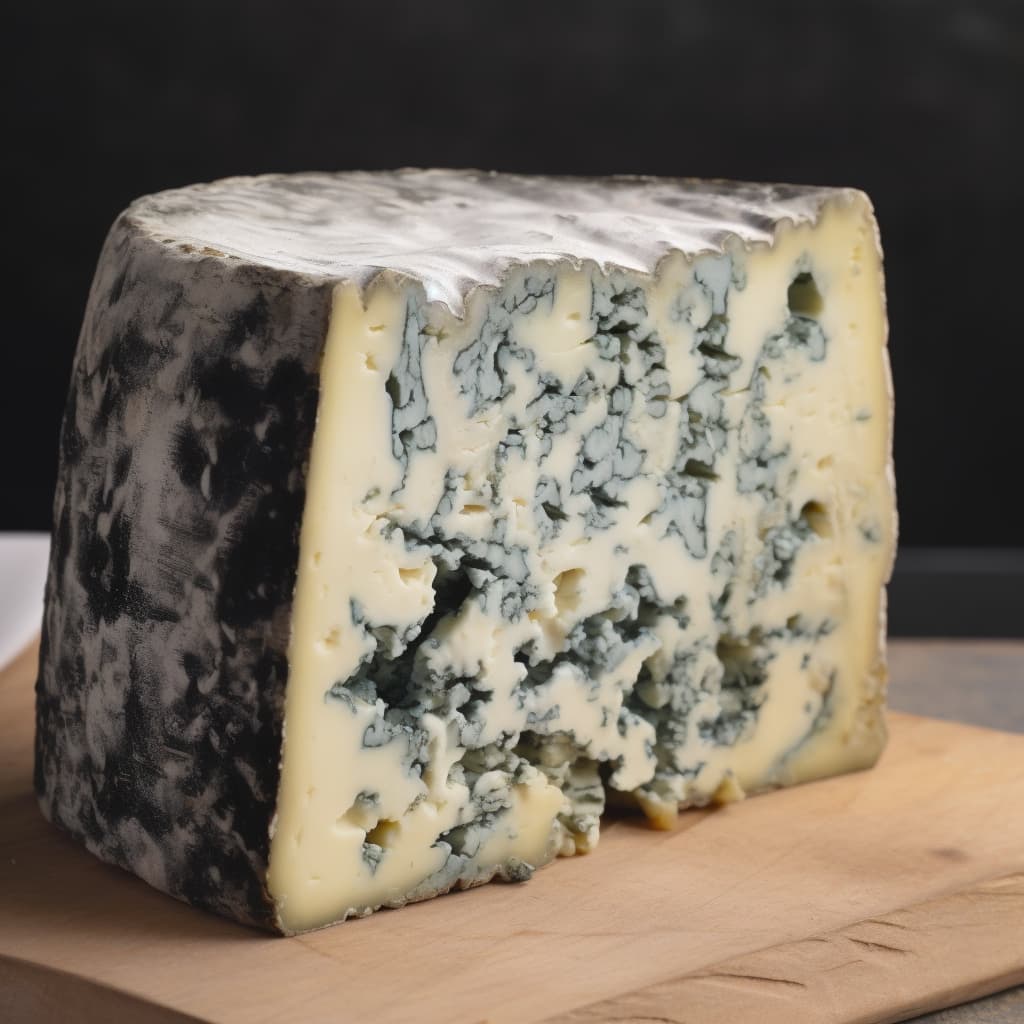AI generated content
This content is generated by an AI and does not reflect the opinions or views of individuals, either living or deceased.
| Text generated by | ChatGPT (GPT-4) |
| Text prompt | Write a blog post about blue mold cheese |
| Image generated by | Midjourney |
| Image prompt | Blue mold cheese |
Blue Mold Cheese: A Culinary Wonder in Blue

Welcome to a world where color and flavor are not merely observed but tasted. Among the many creations that dazzle the senses, blue mold cheese stands as an embodiment of gourmet sophistication and delightful unpredictability. Its intense flavor, uniquely veined appearance, and vivid blue-green hues make it an enigma to the uninitiated and a favorite among connoisseurs.
The Birth of Blue
So, how does cheese become blue? The answer lies in a microscopic universe of molds and bacteria. When cheese is produced, it's usually left to mature or age, allowing it to develop flavor and texture. Penicillium roqueforti and Penicillium glaucum, two types of fungi, are added during the production of blue cheese. These fungi are responsible for creating the blue veins or spots that give the cheese its distinctive appearance and contribute significantly to its unique flavor profile.
During the aging process, the cheese is often pierced with tiny holes to expose it to air, which allows the mold to grow and spread throughout the cheese. This process, called "needling," is essential in producing the rich, robust flavors of blue cheese. It encourages the development of a strong, complex taste and creates the creamy or crumbly texture that we associate with blue mold cheeses.
A World of Flavor
Blue cheese is revered for its strong, tangy, and complex flavor. It is characterized by a deep, salty richness, often with a creamy, buttery texture. Some blue cheeses can also deliver a significant punch of spiciness that isn't typically found in other cheese varieties. However, not all blue cheeses are the same. The range of flavors depends on various factors, including the type of milk used (cow, sheep, or goat), the aging process, and the specific strain of Penicillium used.
Roquefort, Gorgonzola, and Stilton are some of the most renowned types of blue cheese. Roquefort is a sheep milk cheese from France known for its strong, salty flavor and fudgy texture. Gorgonzola, an Italian cheese made from cow's milk, is milder and creamier. Stilton, also known as the "King of Cheeses," hails from the United Kingdom and is recognized for its crumbly texture and rich, mellow flavor. These are just a few of the myriad blue cheese options available worldwide, each with its own distinct characteristics.
Pairing with Blue
Blue cheeses, with their robust flavors, demand to be paired with something that can stand up to them. Sweetness can balance out the saltiness of the cheese, which is why blue cheeses are often paired with sweet wines like Sauternes, Port, or Moscato.
Fruit and blue cheese also make a great combination. Figs, pears, and apples, whether fresh or baked into a dessert, harmonize wonderfully with the tangy flavors of blue cheese. Moreover, a drizzle of honey or a scattering of candied nuts can enhance the overall culinary experience.
For an everyday pairing, blue cheeses can be crumbled over salads for a flavor boost or melted into a sauce to add depth to pasta dishes. They also make a flavorful addition to burgers or gourmet sandwiches.
A Cheese of Contrasts
Blue mold cheese is indeed a cheese of contrasts. Its appearance may be daunting to some, and its flavors might be an acquired taste. But once you cross the threshold of familiarity, you'll discover a cheese variety that is both versatile and delightful, adding depth and character to many dishes or standing proudly on its own on a cheese board. With every bite, blue mold cheese offers a journey through rich, robust flavors that are sure to excite the palate.
